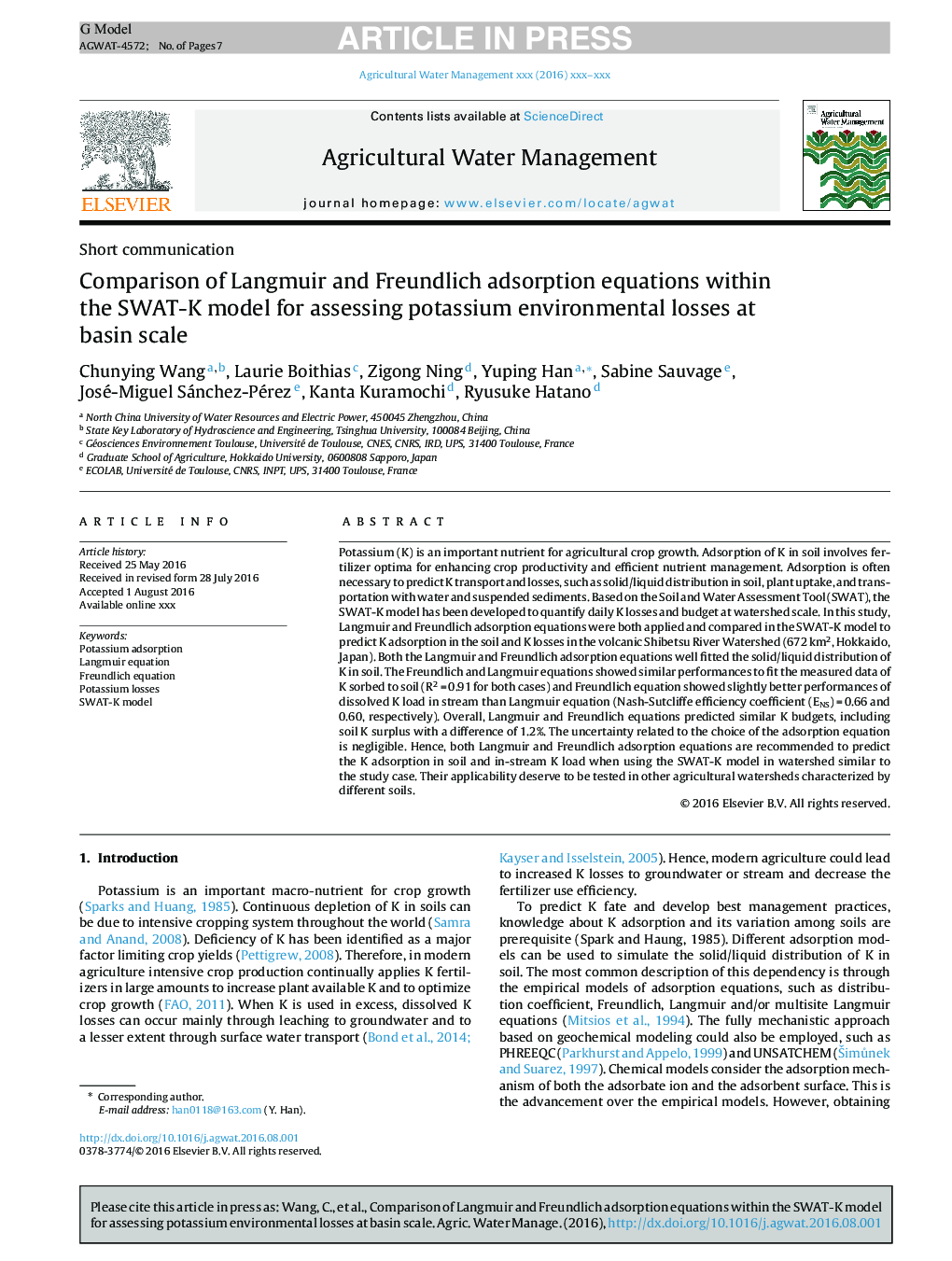| Article ID | Journal | Published Year | Pages | File Type |
|---|---|---|---|---|
| 5758404 | Agricultural Water Management | 2017 | 7 Pages |
Abstract
Potassium (K) is an important nutrient for agricultural crop growth. Adsorption of K in soil involves fertilizer optima for enhancing crop productivity and efficient nutrient management. Adsorption is often necessary to predict K transport and losses, such as solid/liquid distribution in soil, plant uptake, and transportation with water and suspended sediments. Based on the Soil and Water Assessment Tool (SWAT), the SWAT-K model has been developed to quantify daily K losses and budget at watershed scale. In this study, Langmuir and Freundlich adsorption equations were both applied and compared in the SWAT-K model to predict K adsorption in the soil and K losses in the volcanic Shibetsu River Watershed (672Â km2, Hokkaido, Japan). Both the Langmuir and Freundlich adsorption equations well fitted the solid/liquid distribution of K in soil. The Freundlich and Langmuir equations showed similar performances to fit the measured data of K sorbed to soil (R2Â =Â 0.91 for both cases) and Freundlich equation showed slightly better performances of dissolved K load in stream than Langmuir equation (Nash-Sutcliffe efficiency coefficient (ENS)Â =Â 0.66 and 0.60, respectively). Overall, Langmuir and Freundlich equations predicted similar K budgets, including soil K surplus with a difference of 1.2%. The uncertainty related to the choice of the adsorption equation is negligible. Hence, both Langmuir and Freundlich adsorption equations are recommended to predict the K adsorption in soil and in-stream K load when using the SWAT-K model in watershed similar to the study case. Their applicability deserve to be tested in other agricultural watersheds characterized by different soils.
Related Topics
Life Sciences
Agricultural and Biological Sciences
Agronomy and Crop Science
Authors
Chunying Wang, Laurie Boithias, Zigong Ning, Yuping Han, Sabine Sauvage, José-Miguel Sánchez-Pérez, Kanta Kuramochi, Ryusuke Hatano,
